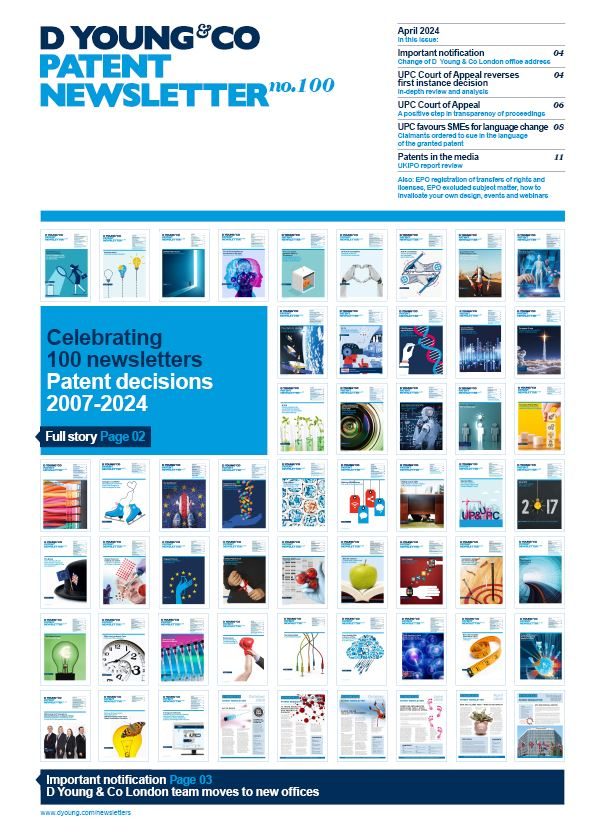Anan Kasei Co v Molycorp Chemicals: Insufficiency
In Anan Kasei Co v Molycorp Chemicals, the Patents Court of England & Wales has found Anan Kasei Co’s patent entitled “Ceric Oxide and method for production thereof and catalyst for exhaust gas clarification” to be valid and infringed.
The patentee, Anan Kasei Co, and its exclusive licensee commenced patent infringement proceedings against Molycorp Chemicals in relation to its products for use in catalysts, including high surface area ceric oxide products for use in vehicle exhausts. Molycorp Chemicals counterclaimed that the patent was invalid for insufficiency and obviousness. While not making new law, the case provides some useful learning points in relation to insufficiency.
Molycorp Chemicals’ counterclaim for insufficiency had two bases.
First, it argued that the integer “a ceric oxide which is an oxide consisting essentially of ceric oxide” was insufficient as the specification did not contain any directions or explanation as to the meaning of the term.
In response, Anan Kasei Co relied on the established line of case-law before the European Patent Office summarised at §1.2.3 of Case T 1730/09 as follows:
“1.2.3 As regards the wording ‘consisting essentially of’, which is also part of claim 1, it was not contained in any of the granted claims. Therefore, the alleged lack of clarity of this term raised by Appellant II can be objected in opposition appeal proceedings. However, as reported in the Case Law of the Boards of Appeal of the EPO, 6th edition (2010), II.B.5.2, referring to decisions T 759/91 and T 522/91, the wording "consisting essentially of", at variance with the wording "comprising substantially", has a defined meaning because of the unequivocal character of the words "consisting of"; therefore, the use of the unequivocal words "consisting of" in combination with "essentially" has been found to solve all interpretation problems of the unclear claims examined in such previous cases. The cited decisions T 759/91 (point 2.2. of the reasons) and T 522/91 (point 2.2. of the reasons) both refer to the decision T 472/88, wherein it was decided that the term "consisting essentially of" was clear and allowed the presence of other components in a claimed composition in addition to the components mandatory in the claim, provided that the essential characteristics of the claimed composition are not materially affected by their presence ... The Board agrees with these previous decisions. Therefore, even though the word "essentially" does not identify precisely the amounts of additional components which could still be contained in the claimed viscoelastic fluid, the wording "consisting essentially of" allows in the present case that the composition of claim 1, which must be viscoelastic, consists of the mandatory components listed in the claims and can contain additionally only other components which do not materially affect the essential viscoelastic characteristics of the composition, e.g. minor amounts of impurities as submitted by Appellant I during oral proceedings.”
Mr Roger Wyand QC, sitting as a Deputy High Court Judge, agreed with Anan Kasei Co, finding the integer to be sufficient.
Second, Molycorp Chemicals submitted that this is a case where the breadth of the claim exceeds the technical contribution to the art made by the invention and is therefore insufficient.
In particular, it submitted that the claims of the patent were “not to a single product … but to a multitude of products with different structures and characteristics, depending on the method of synthesis used.” In essence, on Molycorp Chemicals’ case, claims 1-5 of the patent were framed as “free beer” claims, namely by reference to known desirable properties of a product.
In doing so, Molycorp Chemicals relied on Lord Justice Jacob’s obiter comment in Lundbeck v Generics [2008] EWCA Civ 311:
"61 So, for example, if a man finds a particular way of making a new substance which is 10 times harder than diamond, he cannot just claim "a substance which is 10 times harder than diamond." He can claim his particular method and he can claim the actual new substance produced by his method, either by specifying its composition and structure or, if that cannot be done, by reference to the method (see Kirin-Amgen at [90-91]) but no more. The reason he cannot claim more is that he has not enabled more – he has claimed the entire class of products which have the known desirable properties yet he has only enabled one member of that class. Such a case is to be contrasted with the present where the desirable end is indeed fully enabled – that which makes it desirable forms no part of the claim limitation.”
Mr Roger Wyand QC again found for Anan Kasei Co, concluding that “…the claims are to ceric oxide having certain properties. The Patent teaches a range of conditions to achieve a product with the favourable characteristics claimed. Dr Brophy accepted in cross-examination when it was put to him that the reader is taught a general principle which can then be applied, answering "I think, in this particular case, yes" … I find that this insufficiency attack fails.”
View full decision (Bailii)
Anan Kasei Co. Ltd & Anor v Molycorp Chemicals & Oxides (Europe) Ltd [2018] EWHC 843 (Pat) (23 April 2018).
Bailii: [2018] EWHC 843 (Pat)Please note that both the claimant and defendant’s name changed during the course of proceedings. The original names are used in the case summary for ease.
